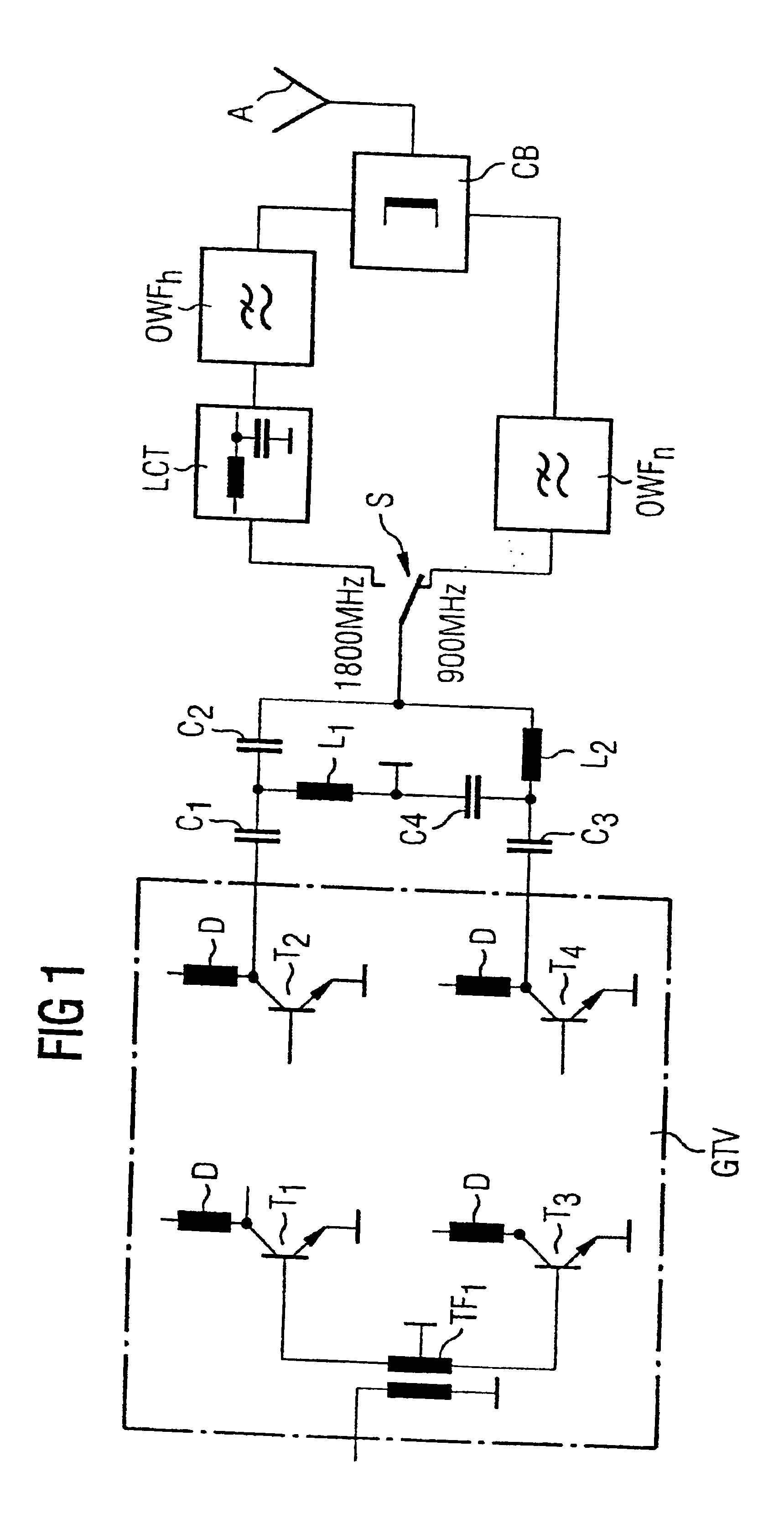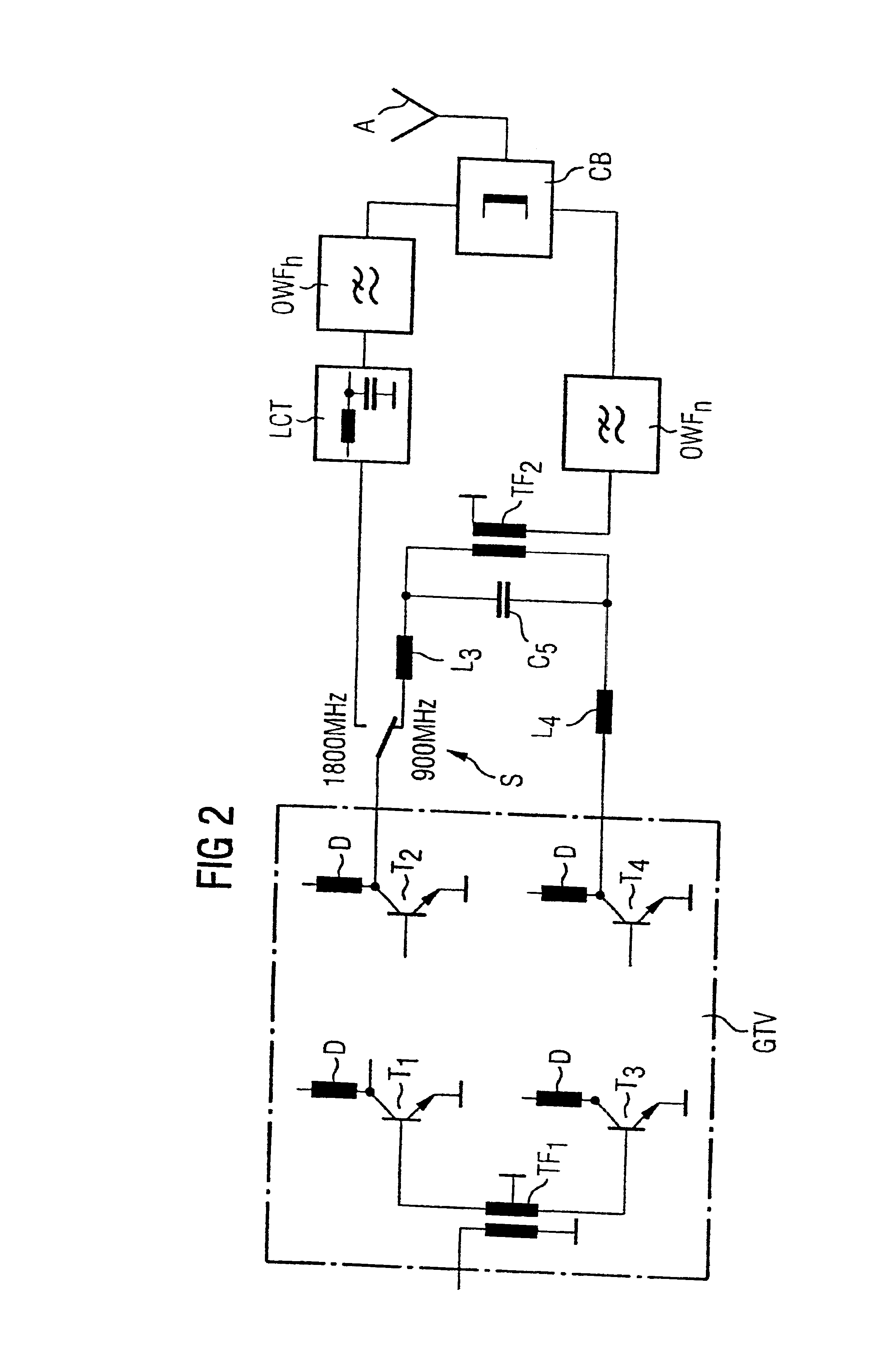Transmission output stage for a mobile telephone
a technology of output stage and mobile telephone, which is applied in the direction of push-pull amplifiers, phase splitters, gated amplifiers, etc., can solve the problems of large loss of useful signal at the fundamental frequency, cost and circuit board area, and the necessary expenditure for filtering harmonics, so as to reduce circuit expenditure and reduce the expenditure for suppressing harmonics.
- Summary
- Abstract
- Description
- Claims
- Application Information
AI Technical Summary
Benefits of technology
Problems solved by technology
Method used
Image
Examples
second embodiment
[0021]FIG. 2 shows the transmit stage which differs from the embodiment of FIG. 1 in the output matching circuit. The output signals of the push-pull amplifier GTV here pass to an LC transformer consisting of the inductances L3 and L4 and the capacitance C5, which is followed by a push-pull transformer TF2, in the case of operation at the lower frequency, the switch S being set to the lower position for the 900 MHz operation. This output matching circuit provides for the necessary impedance match to the antenna and for a phase difference of 0° of the signals so that these are combined in the correct phase before the harmonic filter OWF for the low frequency.
first embodiment
[0022]In the case where the transmission output stage is operated at the high frequency, 1800 MHz in this case, the push-pull amplifier is operated in single-ended mode as in FIG. 1 and the output signal passes via the switch, which is in the 1800 MHz position, directly to the upper branch consisting of an LC transformer LCT and the harmonic filter OWFb for the high frequency.
PUM
 Login to View More
Login to View More Abstract
Description
Claims
Application Information
 Login to View More
Login to View More - R&D
- Intellectual Property
- Life Sciences
- Materials
- Tech Scout
- Unparalleled Data Quality
- Higher Quality Content
- 60% Fewer Hallucinations
Browse by: Latest US Patents, China's latest patents, Technical Efficacy Thesaurus, Application Domain, Technology Topic, Popular Technical Reports.
© 2025 PatSnap. All rights reserved.Legal|Privacy policy|Modern Slavery Act Transparency Statement|Sitemap|About US| Contact US: help@patsnap.com



